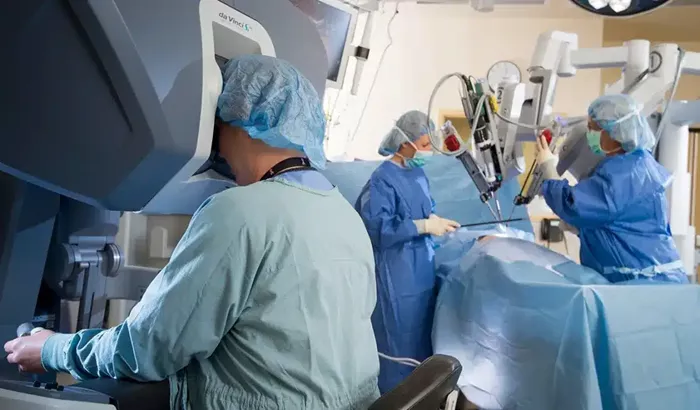As Men’s Health Week approaches, experts emphasize the importance of awareness around prostate health and treatments such as prostatectomy, a surgical procedure to remove the prostate gland often used to treat prostate cancer.
Dr. Chris Ogden, a leading robotic surgeon and urologist, explains that many men diagnosed with prostate cancer do not require immediate treatment; low-risk cases are often managed with active surveillance involving regular blood tests and MRIs.
For those needing treatment, alternatives to radical prostatectomy include focal therapies like high-intensity focused ultrasound, suitable for specific cancer types.
Radical prostatectomy, especially when cancer affects both sides of the prostate and is intermediate or high risk, involves removing the entire prostate gland and seminal vesicles.
This surgery has evolved from invasive open procedures to minimally invasive robotic-assisted operations, now considered the gold standard. Robotic prostatectomy allows surgeons to operate with enhanced precision in confined pelvic spaces, preserving nerves critical for urinary continence and erectile function.
Mr. Hasan Qazi, a specialist in robotic surgery, highlights that this approach offers a high cure rate while minimizing postoperative pain and speeding recovery. Patients often leave the hospital the day after surgery and resume work within a week, with most fully recovering in about eight weeks.
Contrary to outdated beliefs, prostatectomy today is a controlled, often painless procedure with limited disruption to daily life. Robotic surgery provides magnified views and precise movements, enabling nerve-sparing techniques that reduce risks of erectile dysfunction and incontinence.
The procedure typically takes two to four hours under general or spinal anesthesia. Surgeons may also remove nearby lymph nodes to assess cancer spread and reduce recurrence risk. Postoperative care includes catheter use for urine drainage, usually removed within two weeks.
Overall, advances in prostatectomy offer men effective cancer treatment with improved safety and faster recovery, underscoring the importance of early diagnosis and informed decision-making in prostate health management.


